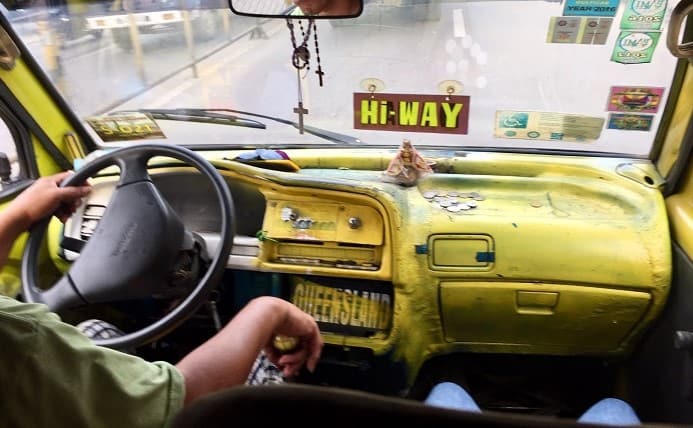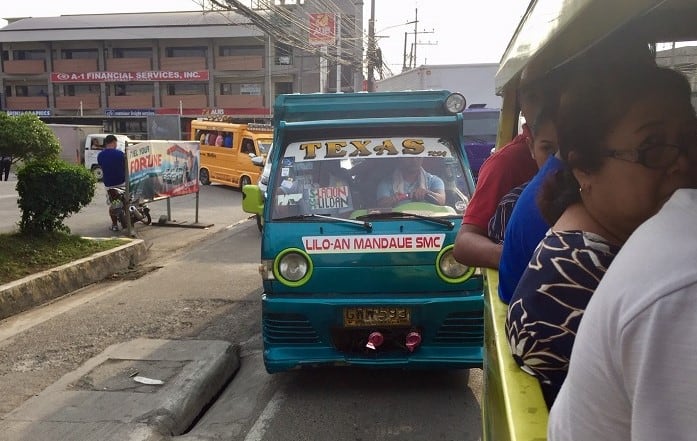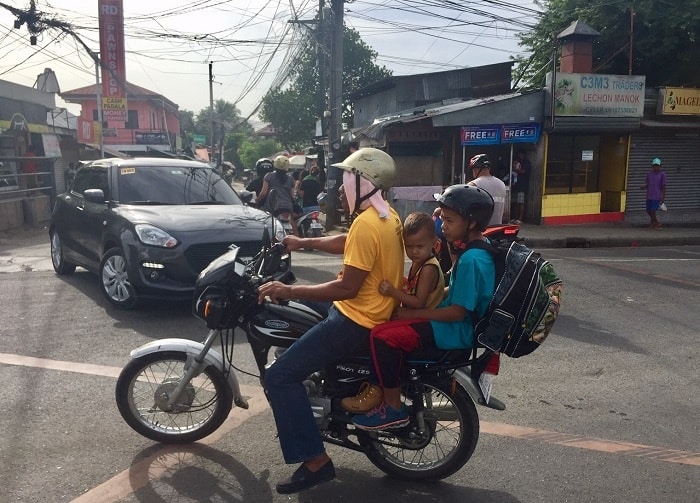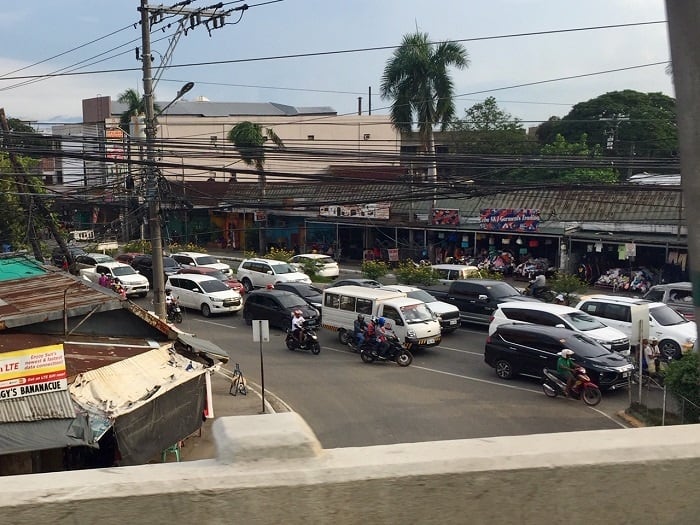Last Updated on October 28, 2024 by Ellen
Cebu City, Philippines, was named “the most typical place in the world” by a Bloomberg opinion columnist. I have a few thoughts on this distinction, now that we’ve been in the area for a few weeks. The majority of our American readers have not been to Cebu, or similar places in Southeast Asia.
On background, the author writes how Cebu is typical in the following categories: income and income inequity, economic development, demographic, cultural and geographic components. I won’t parse each point; I’ll simply hit the majors.
Cebu has call centers outsourced by western tech companies, and international trade is a large economic factor in this port city. There are plenty of nice hotels and malls for visitors and locals with decent jobs.
English is widely spoken, Christianity is predominant, and other cultural influences from the U.S. are evident, such as a love for basketball and fast food. We have seen more Cleveland Cavaliers jerseys worn by locals here than anywhere else on the planet.
All of that might qualify it for the most typical place in the world. So, too, do its problems.
Just outside mall perimeters, poverty is striking. People live in shanties. Beggars are incessant – whether it’s the sidewalk or in the middle of the road in stopped traffic. Women and children. Dirty, in rags, with big, sad eyes. It’s heartbreaking.

The cost of living in the Philippines is low, as the article points out. I can give many specific examples. In a nice mall, a large plate of food and a drink cost the equivalent of $2. Supplies are relatively cheap, such as laundry soap, underwear, small fans, small coffee makers, all of which we have bought for our extended stay near Cebu City.
We rented an apartment less than 10 miles down the road from Cebu City in a quaint suburb named Liloan. Yet it takes two hours to get from Liloan to the city at certain times of the day, because roadway infrastructure cannot support the traffic.
And that is what the Bloomberg business opinion writer entirely overlooked: traffic and cars, and how local communities are changing, and how they are unable to absorb all of these new cars on the road. Perhaps he overlooked this part of the most typical place in the world because maybe he never rode in a jeepney outside Cebu City – if he rode one at all. But for a “typical” city on Earth, this commute is not as typical as most.
Jeepneys are similar to songthaews in Thailand, or colectivos in Mexico. It’s a mode of public transportation for the working class — the people who are too poor to afford cars, even with zero down payment offers. It costs less than $1 to go from Liloan into Cebu City on a jeepney. There aren’t many other choices. Jeepneys are basically it for working class people who don’t drive cars or motorbikes.

Ride sharing is here, but it’s expensive. Grab (like Uber) can cost from $6 to $8 one way from Liloan into the city, depending on the time of day. We don’t want to drop $15 on every run into the city, so we have been taking jeepneys, and we have been sitting in traffic. In high temperatures, with exhaust pouring into the jeepney, hip to hip with whomever happens to be sitting next to us.
There are two narrow roads that go from Liloan into the city. They merge on the outskirts of the city and create crazy traffic backups. Liloan is on the north side. Looking at the map to the southern side, it’s the same on that end, too. One line of cars can fit in a lane, and scooter drivers navigate around cars to advance in traffic. A clog of cars, and jeepneys and trucks, just sit. And sit and sit and sit. Many jeepneys are more like jalopies. Many diesel trucks are ancient. Older cars emit smokey exhaust.

“Car companies offer ‘no down payment’ deals so anyone can get a new car,” one local man in Cebu told us. “There are no regulations on the numbers (of cars) that can be sold.”
And that is the problem in a nutshell: too many cars, too many people, not enough money and infrastructure. In this way, Cebu definitely is the most typical place in the world, no?
It’s not only Cebu. It’s the same story in so many cities on the planet.
From experience this year alone, I know Thailand has dreadful gridlock in places like Bangkok and, to a lesser extent, Chiang Mai. Malaysia’s George Town is in stop-and-creep-stop-and-creep mode every single morning and evening. Penang has the same problem as Cebu — there aren’t enough roads to accommodate all the cars into and out of the city. Kuala Lumpur is a nightmare. It once took us nearly an hour to go less than three miles!
Americans have no idea about any of this. Why should they care? The “typical city” on Earth is below their standards of living. As the columnist wrote, ” Cebu is remarkably representative of the world as a whole.” America is not typical, and not taken into account.
Highways and interstates have been enjoyed by millions of Americans for so long no one has any idea what travel is like outside their country. Commutes around some U.S. cities are time sucks — but at least there are vehicle emissions standards. You won’t get light-headed from carbon monoxide in Los Angeles or D.C. or Dallas. And, you probably earn more than $455 a month as part of your reward for enduring a hellacious commute.
The average family income in the Philippines is about $5,340, according to the author. I’ve seen statistics that show the median age is 23 years old.

Yet car companies see new markets in all of those young people. They’ve been targeting China and India for years already. Now, in Cebu’s emerging economy, another generation wants better jobs, for better lives, which includes better transportation. Another notch for the most typical place in the world. Put all of those new cars with no down payments into an infrastructure designed for much, much less, and you’ll sit and stew in traffic.
In a way, it must be like the 1950s in America, when the working class started getting new cars. New drivers and new cars on the roads every day. No one told us we couldn’t do it. We can’t tell anyone else they can’t do it, either.

A local man in Nusa Penida, Indonesia, lamented the volume of new wheels coming onto the island from Bali. He said a new car was shipped over every single day of the year — for the last five years. Some of the roads on that island aren’t even paved yet.
Car companies will continue to target places like Bali and Cebu – the most typical place in the world – with “no down payment” offers. They have to. Car sales were terrible in 2019, so there is incentive to find new markets — and find them fast.
Damage to people’s quality of life through infrastructure strains, damage to the environment with more emissions belched into the air, well, that’s just typical, isn’t it?

